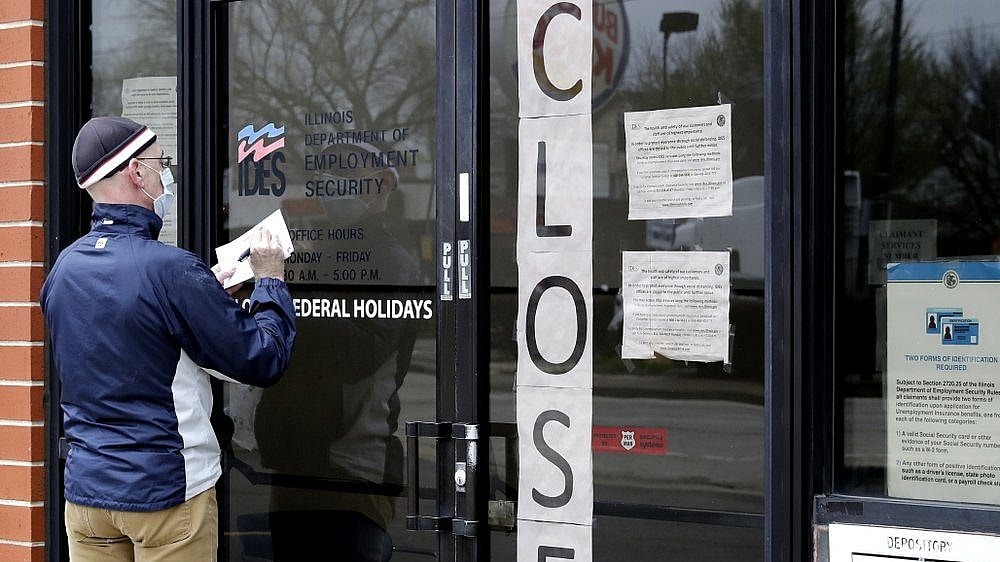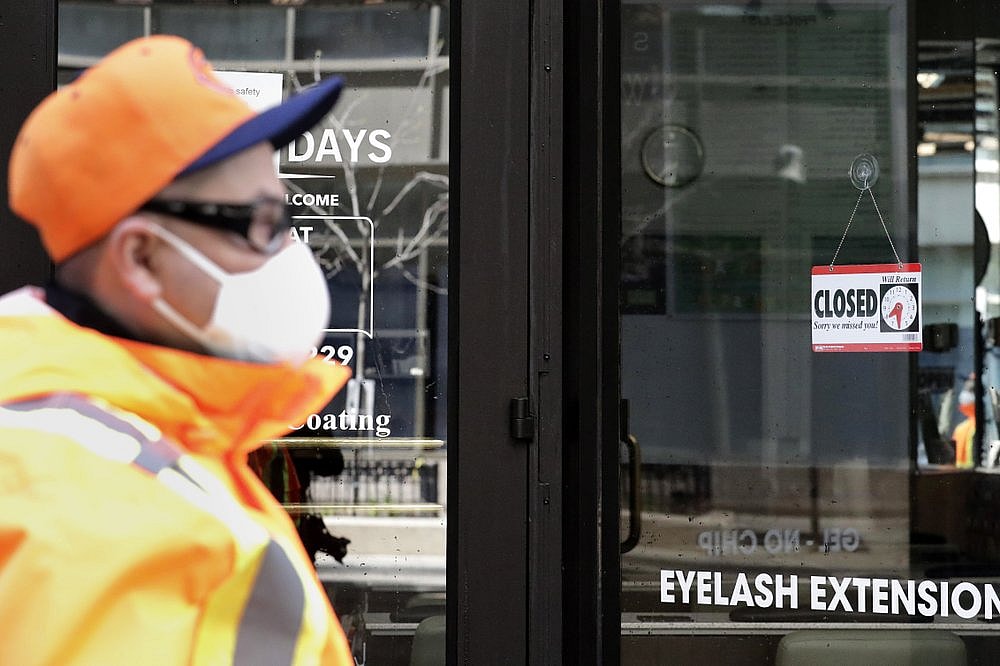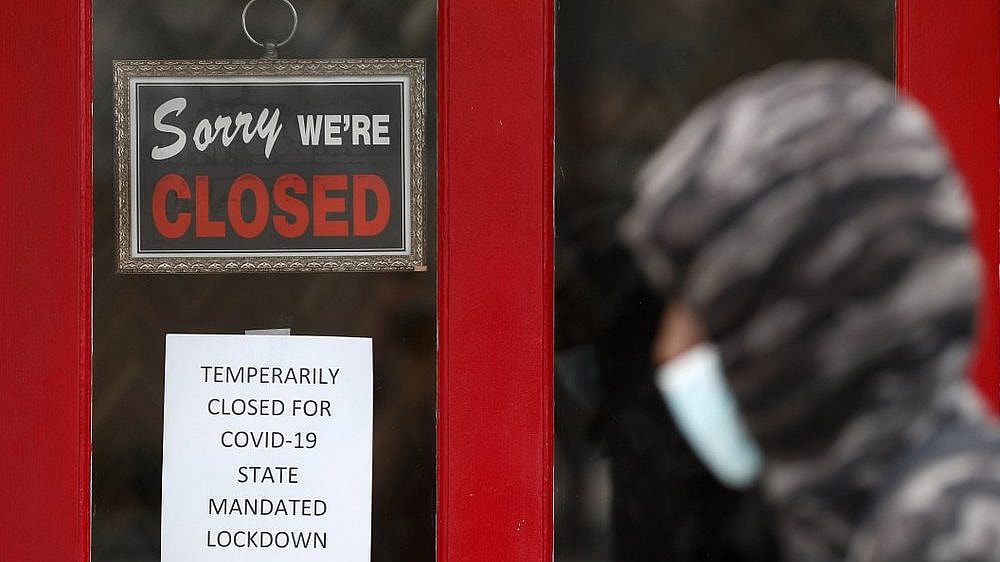WASHINGTON (AP) — The U.S. unemployment rate hit 14.7% in April, the highest rate since the Great Depression, as 20.5 million jobs vanished in the worst monthly loss on record. The figures are stark evidence of the damage the coronavirus has done to a now-shattered economy.
The losses, reported by the Labor Department Friday, reflect what has become a severe recession caused by sudden business shutdowns in nearly every industry. Nearly all the job growth achieved during the 11-year recovery from the Great Recession has now been lost in one month.
The report indicated that the vast majority of April’s job losses — roughly 90% — are considered temporary, a result of businesses that were forced to suddenly close but hope to reopen and recall their laid-off workers. Whether most of those workers can return to their jobs anytime soon, though, will be determined by how well policymakers, businesses and the public manage their response to the public health crisis.
The collapse of the job market has occurred with stunning speed. As recently as February, the unemployment rate was a five-decade low of 3.5%, and employers had added jobs for a record 113 months. In March, the unemployment rate was just 4.4%
READ MORE: Petition asks Congress to protect Black-owned businesses during COVID-19
The jump in the unemployment rate didn’t capture the full devastation wrought by the business shutdowns. The Labor Department said its survey-takers erroneously classified millions of Americans as employed in April even though their employers have closed down. These people should have been classified as on temporary layoff and therefore unemployed. If they had been counted correctly, the unemployment rate would have been nearly 20%, the government said.
President Donald Trump, who faces the prospect of high unemployment rates through the November elections, said the figures were “no surprise.”

“What I can do is I’ll bring it back,” Trump said. “Those jobs will all be back, and they’ll be back very soon. And next year we’ll have a phenomenal year.”
But economists increasingly worry that it will take years to recover all the jobs lost. The nonpartisan Congressional Budget Office expects the jobless rate to be 9.5% by the end of 2021.
Racial minorities and lower-income workers suffered the most from the economic shutdown. Job losses were especially severe for Latinos, whose unemployment rate leapt up to 18.9% from 6% in March.
In addition to the millions of newly unemployed, 5.1 million others had their hours reduced in April. That trend, too, means less income and less spending, perpetuating the economic downturn. A measure of what’s called underemployment — which counts the unemployed plus full-time workers who were reduced to part-time work — reached 22.8%, a record high.
Though some businesses are beginning to reopen in certain states, factories, hotels, restaurants, resorts, sporting venues, movie theaters and many small businesses are still largely shuttered. As companies have laid off tens of millions, lives have been upended across the country.
One of the newly unemployed, Sara Barnard, 24, of St. Louis, has lost three jobs: A floor manager at a pub and restaurant, a bartender at a small downtown tavern and the occasional stand-up comedian. Her main job was at McGurk’s, an Irish pub and restaurant near downtown that closed days before St. Patrick’s Day. She had worked there continually since high school.
READ MORE: Black freelancers hit hard by COVID-19 get creative for income
McGurk’s tried selling food curbside, Barnard said, but it was costing more to keep the place open than the money that was coming in. Around that time, the bar where she worked closed, and comedy jobs ended when social distancing requirements forced clubs to close.
McGurk’s is a St. Louis landmark, and Barnard expects it to rebound quickly once it reopens. She just doesn’t know when.
Job losses and pay cuts are ranging across the world. Unemployment in the 19-country eurozone is expected to surpass 10% in coming months as more people are laid off. That figure is expected to remain lower than the U.S. unemployment rate. But it doesn’t count many people who either are furloughed or whose hours are cut but who receive most of their wages from government assistance.
In France, about half the private-sector workforce is on a government paid-leave program whereby they receive up to 84% of their net salary. In Germany, 3 million workers are supported in a similar system, with the government paying up to 60% of their net pay.

In the five weeks covered by the U.S. jobs report for April, 26.5 million people applied for unemployment benefits.
The job loss reported Friday was a smaller figure because the two are measured differently: The government calculates job losses by surveying businesses and households. It’s a net figure that also counts the hiring that some companies, like Amazon and many grocery stores, have done. By contrast, total jobless claims are a measure of just the layoff side of the equation.
The government’s report noted that many people who lost jobs in April but didn’t look for another one weren’t even counted in the unemployment rate. They are captured in a separate index: The proportion of all working-age adults who are employed. This figure is now just 51.3%, the lowest proportion on record.
For the United States, a key question is where the job market goes from here. Applications for unemployment aid, while high, have declined for five straight weeks, a sign that the worst of the layoffs has passed. Still, few economists expect a rapid turnaround.
A paper by economists at the San Francisco Federal Reserve estimates that under an optimistic scenario that assumes shutdowns are lifted quickly, the unemployment rate could fall back to about 4% by mid-2021.
But if shutdowns recur and hiring revives more slowly, the jobless rate could remain in double-digits until the end of 2021, the San Francisco Fed economists predict.
Raj Chetty, a Harvard economist, is tracking real-time data on the economy, including consumer spending, small business hiring and job postings. Chetty noted the economy’s health will hinge on when the viral outbreak has subsided enough that most Americans will feel comfortable returning to restaurants, bars, movie theaters and shops.
The data suggests that many small businesses are holding on in hopes that spending and the economy will rebound soon, he said. Small business payrolls have fallen sharply but have leveled off in recent weeks. And job postings haven’t dropped nearly as much as total jobs have. But it’s unclear how much longer those trends will persist.
“There’s only so long you can hold out,” Chetty said.


